THE CITY
The city of Zaragoza is a Spanish municipality, capital of the homonymous province and of Aragon.
It is located on the banks of the Ebro, Huerva and Gállego rivers and the Imperial Canal of Aragón, in the center of a wide valley.
Its privileged geographical situation makes it an important logistic and communications hub; It is located about 300 km from Madrid, Barcelona, Valencia, Bilbao and Toulouse.
Part of its municipal area is occupied by the Sotos y Galachos del Ebro Directed Nature Reserve.
It is the fifth most populous Spanish city with almost 700,000 inhabitants and concentrates more than 50% of the inhabitants of the Autonomous Community of Aragon.
INTERESTING PLACES
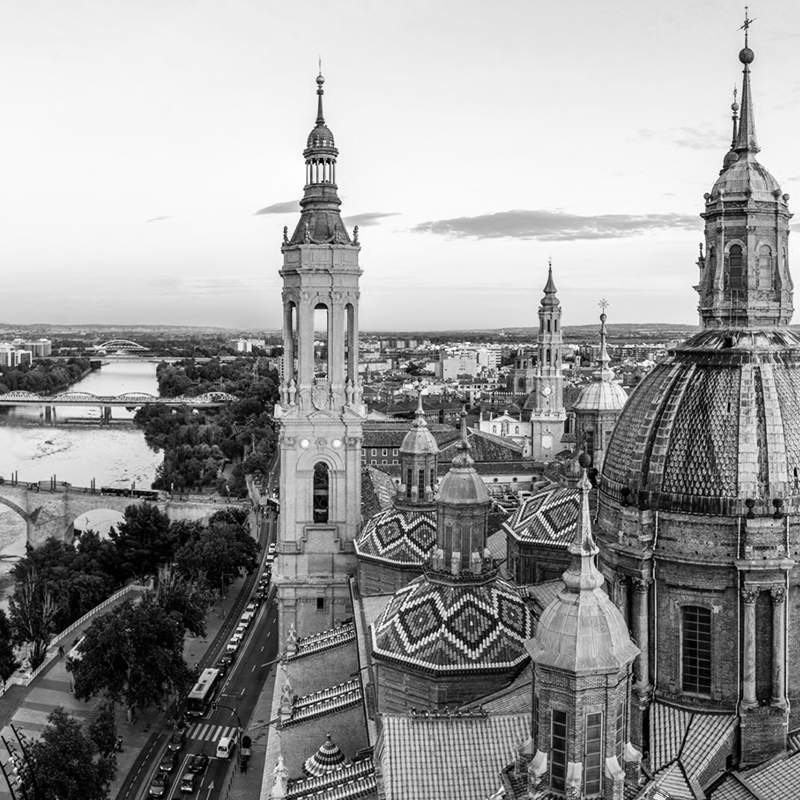
LA BASÍLICA DEL PILAR
La Basilica del Pilar is a baroque temple and one of the most important pilgrimage centers in the Catholic world.
It is also a first-rate artistic center that brings together works of great value from different periods.
The main altarpiece from the 16th century by Damián Forment, the main choir, the organ, and the Santa Capilla (designed by the architect Ventura Rodríguez), a masterpiece of 18th century art that houses the image of the Virgen del Pilar from the 15th century, stand out. on the column.
The frescoes in the Coreto vault and the Regina martyrum dome were painted by Goya.
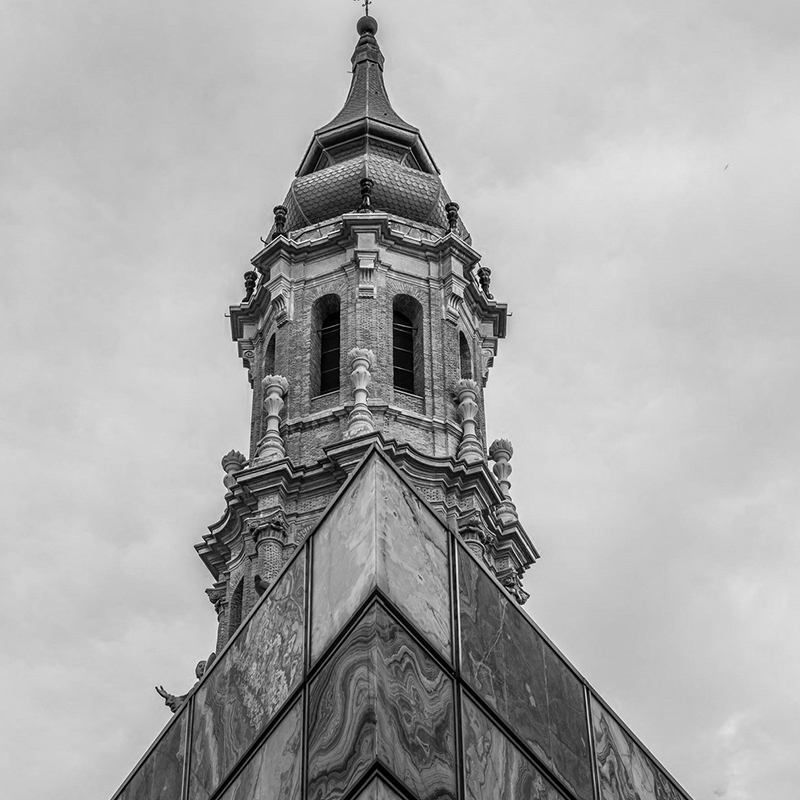
CATEDRAL DEL SALVADOR DE ZARAGOZA: LA SEO
La Seo, built on the main mosque of the old Muslim city, the oldest remains are those preserved in the area of the Romanesque apse dating from the 12th century.
Eclectic set of styles, which combines from the Romanesque to the Neoclassical.
On the outside, the wall of the parish chapel of San Miguel Arcángel stands out, a masterpiece of Zaragoza Mudejar, and inside the Gothic main altarpiece, made of polychrome alabaster.
The Tapestry Museum exhibits an extraordinary collection of Flemish tapestries from the Metropolitan Council.
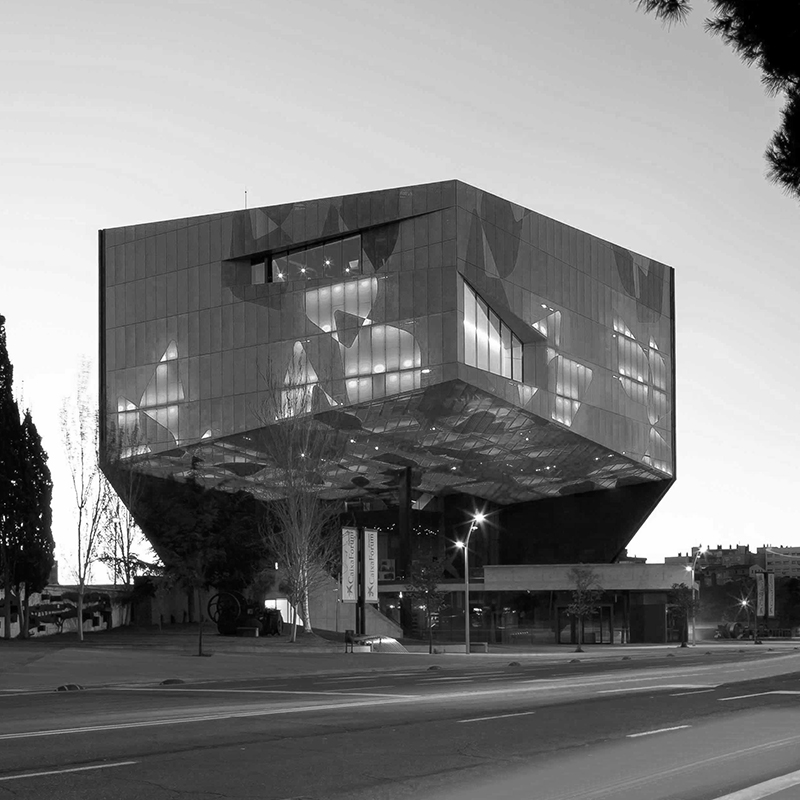
CAIXA FORUM
CaixaForum Zaragoza is a cultural and social center of Obra Social la Caixa.
The building, with a total area of 7,000 m2, is the work of Estudio Carme Pinós.
In its two exhibition halls, art and science exhibitions take place.
It offers a wide program of activities: music and poetry cycles, conferences, projections, workshops and activities for all audiences.
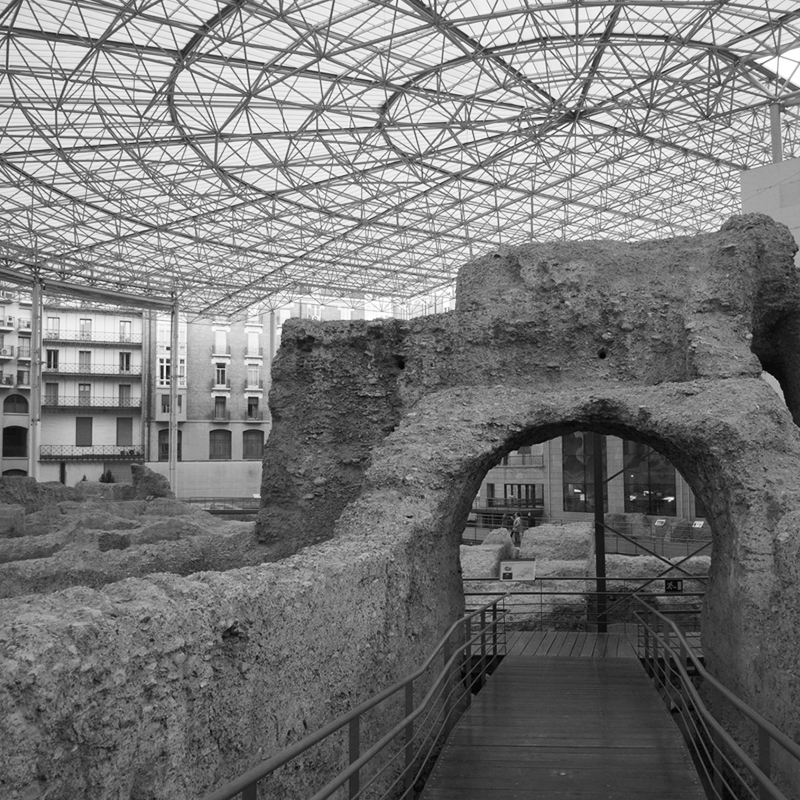
CAESARAUGUSTA ROUTE
It is one of the largest theaters in Roman Hispania. It had a capacity of around 6,000 spectators, a fact that reveals the importance of this building in a city that had about 18,000 inhabitants. Started in the time of Tiberius, its construction continues until the empire of Claudius.
The theater remains until the s. III AD, when its plundering began, since part of its materials were used to regrow the wall.
Unlike other theaters that took advantage of the unevenness of the land to develop the stands, Caesaraugusta’s is built on a flat site, following the model of Marcelo’s theater in Rome.

FRANCISCO DE GOYA
On this tour we will follow in the footsteps of Goya in Zaragoza; frescoes, portraits and engravings will bring us closer to the personality of the most universal Aragonese artist.
- Basilica del Pilar
- Zaragoza Museum
- Goya Museum – Ibercaja Collection
- The Charterhouse of Aula Dei
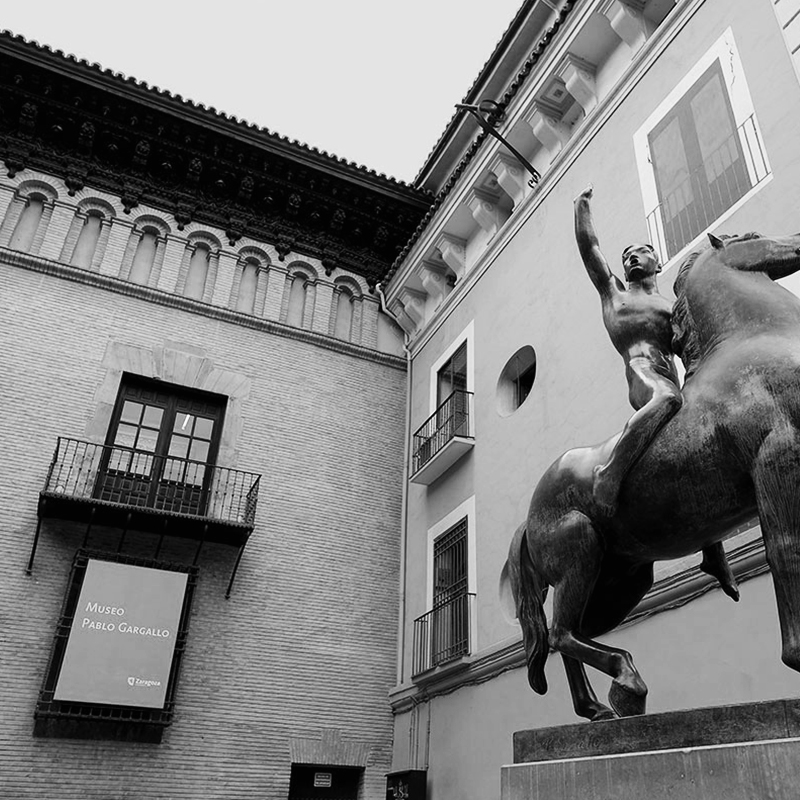
PABLO GARGALLO MUSEUM
Monographic museum dedicated to the work of the Aragonese sculptor Pablo Gargallo.
It contains sculptures, drawings, engravings and the cardboards made as patterns to form some of his sculptures, as well as the Documentation Fund related to the artist himself and contemporary sculpture.
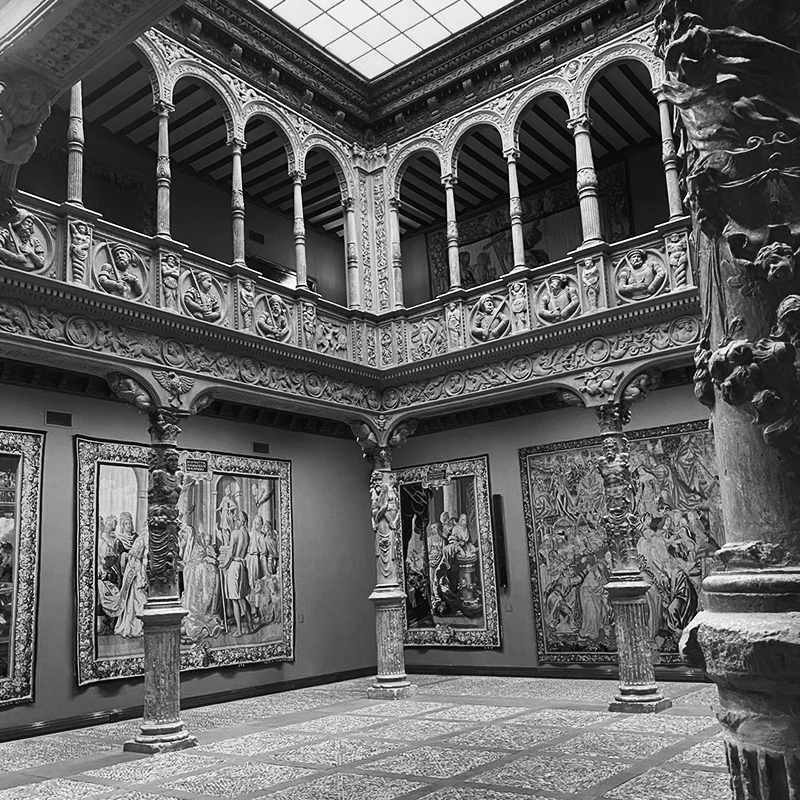
PATIO DE LA INFANTA
One of the best-preserved Aragonese Renaissance courtyards, it belonged to the now-defunct Zaporta Palace, whose façade and courtyard were bought by a French antiquarian and transferred to Paris, in 1980 it was located at the Ibercaja Headquarters stone by stone.
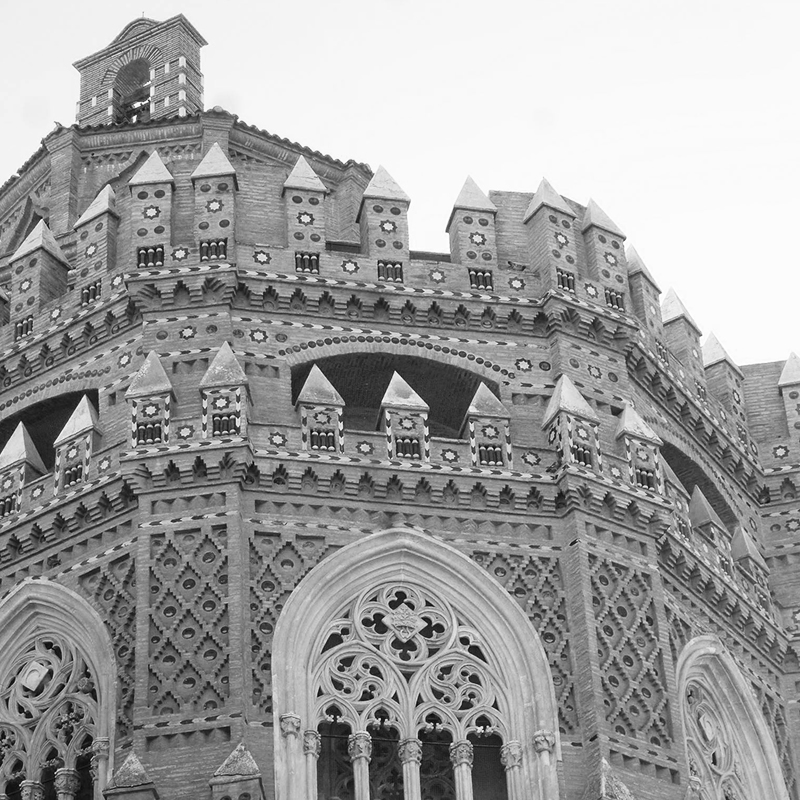
MUDÉJAR: WORLD HERITAGE
On this tour we will relive the medieval past of Zaragoza, visiting evocative places that offer us an authentic journey through the tunnel of time.
- Cathedral of San Salvador
- Aljafería
- Fortea Keep
- Tower of the Zuda
- Convent of the Holy Sepulcher
- Arch and House of the Dean
- Church of the Madeleine
- Saint Paul
- San Miguel
- San Gil
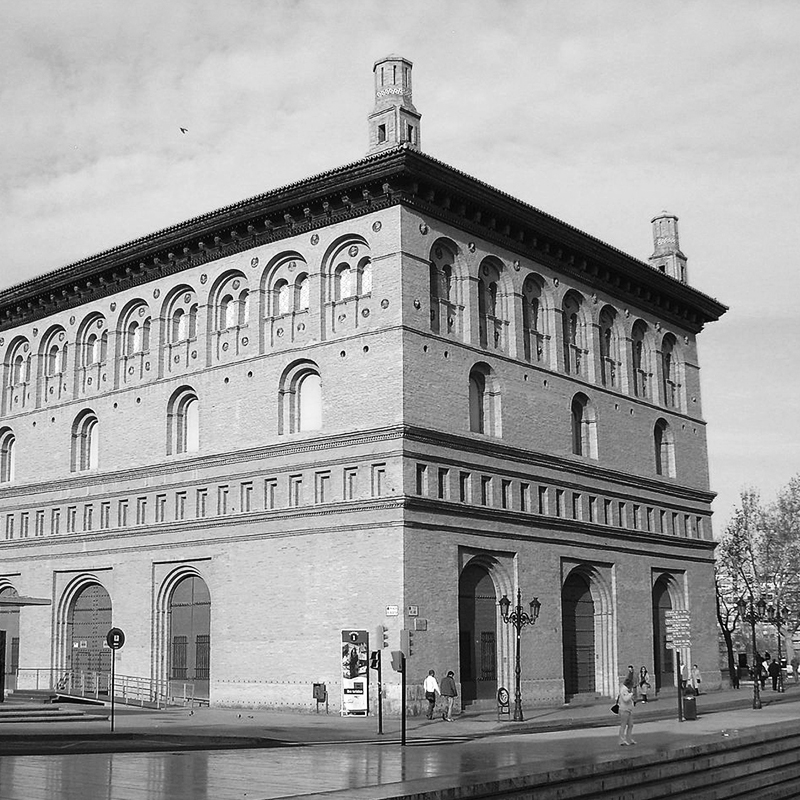
LA LONJA
Used during the last decades as a municipal exhibition hall, it owes its name to the function for which it was created, built by the Council as a Merchant Market.
The greatest exponent of Aragonese Renaissance civil architecture, it presents marked Quattrocento and Florentine lines, with the eaves and the gallery of small arches standing out on the outside and, inside, a large hall with ringed columns and star-shaped ribbed vaults.

EXPO ZARAGOZA
As a result of the 2008 International Exhibition Water and sustainable development, Zaragoza has undergone a great transformation, leaving a valuable legacy with the construction of new and modern buildings.
- Water Tower.
- Bridge Pavilion.
- Zaragoza River Aquarium.
- Luis Bunuel Water Park.
- Aragon Pavilion.
- Pavilion of Spain.
- Aragon Congress Palace.
